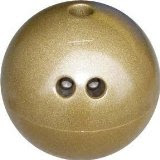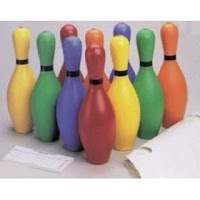Author: The Bowling Coach Author
Score rules are the basic rules in bowling. They determine who won the game or how they got their scores. There are guidelines that need to be followed in scoring a bowling game.
 There are frames that are used in scoring the number of pins that were knocked down during the delivery. The frame is shaped in a square with a little square box in the upper right corner of the square. When a strike is scored, no marking or counts are made in the boxes. However, the pins that were knocked down on the first delivery are scored in the box next to the small square. The pins knocked down on the second delivery are listed on the smaller box inside the square.
There are frames that are used in scoring the number of pins that were knocked down during the delivery. The frame is shaped in a square with a little square box in the upper right corner of the square. When a strike is scored, no marking or counts are made in the boxes. However, the pins that were knocked down on the first delivery are scored in the box next to the small square. The pins knocked down on the second delivery are listed on the smaller box inside the square.
A strike occurs when all 10 pins are knocked down on the first delivery. The square is then marked with the letter “x” on the upper right corner of the box. The score is then made by counting 10 for the strike and adding it to the number of pins knocked down on the next two deliveries.
Two strikes made consecutively are scored as a “double”. The score for the first strike is then 20 and the number of pins knocked down on the first delivery before the second strike. Strikes that are made on three successive attempts are called a “turkey” and they are scored as triple. The score of the initial strike is 30. The maximum score that a player can get is 300. To do this, he needs to make 12 strikes consecutively.
There is also a spare, which is scored when the pins that were left standing after the first delivery were knocked down on the second delivery. Both deliveries should fall in the same frame. A spare is then marked with a “/” in the smaller square on the upper right corner of the frame. The count for every spare is scored 10 added to the number of pins knocked down after the next delivery.
An open frame occurs when a player was unable to knock down all of the 10 pins after the two deliveries. A split may happen when the head pin was knocked down but there were lower pins that remained standing creating two separate set of pins.
Scoring may be hard to understand especially if the player is a beginner. It would be easier for him to enjoy the game first before understanding the scoring guidelines. After frequent visits to the bowling lanes, he will eventually learn to understand the scoring rules of bowling.
Article Source: http://www.articlesbase.com/sports-and-fitness-articles/understanding-scoring-rules-in-bowling-350563.html
About the Author:
For bowling techniques or just bowling visit The Bowling Coach.
Sorting Out Strikes and Spares - Scoring a Bowling Game
Author: The Bowling Coach
Believe it or not, the average recreational bowler, though capable of performing well on the bowling alley, may be at a total loss when it comes to being able to keeping score.
 Many bowling alleys now have an automatic scoring system that does all the figuring of the scores for them. While it isn't exactly a skill that can contribute to an improved game, fully understanding bowling includes knowing how to score a game.
Many bowling alleys now have an automatic scoring system that does all the figuring of the scores for them. While it isn't exactly a skill that can contribute to an improved game, fully understanding bowling includes knowing how to score a game.
Below is an easy way (hopefully) to follow walk-through of how the fallen pins convert to points on the board:
1. As you may already know, each game is divided into 10 frames. That number corresponds with the number of boxes lined up in a row next to a players name on the scoreboard. Each box has a smaller box inside at the top left corner.
2. In the smaller box, you should write down the number of pins that fell on the player's first try of the frame.
3. In the box next to the smaller one where you recorded the first attempt, write down the number of pins that fell on the second try.
4. Add the two numbers together and place the result (total) in the larger space at the bottom of the box.
5. If a strike was made on the first attempt, mark it with an 'X' in the small box. Add 10 points (for the strike) to the total number of pins that was recorded in the previous box and write it down in the totals area of that particular frame.
6. If a second strike followed the first one, add 10 points for the first strike, another 10 for the second, but before closing the tally for this particular frame, record the number of pins that fell on the next frame's first attempt. Add this number to the 20 points from the previous frame.
7. In the event of a spare, indicate a slash (/) in the small box after all the pins have been knocked down on the second attempt. Then wait for the number of pins to fall on the next frame's first attempt and add this to the 10 points from the spare. Write this number in the totals area of the frame where the spare was made.
The tediousness of the process is overshadowed by the convenience of computers doing it, but it is part of knowing what bowling is about. For one to fully appreciate the game in all of its aspects, taking the time to practice it won't hurt.
Article Source: http://www.articlesbase.com/sports-and-fitness-articles/sorting-out-strikes-and-spares-scoring-a-bowling-game-410204.html
About the Author:
Read more about bowling tips, including spare bowling and bowling hook at The Bowling Coach website.
Author: The Bowling Coach
Many bowlers aspire to have consistent strikes in bowling but their schedules may not allow them to practice in a bowling alley as frequently as they would like. There are many ways bowlers can practice and improve their performance even if they are away from the bowling lanes. Visualize the performance of consistent strikes that every bowler dreams of making. Here are some helpful tips on how to get the strikes even when not in the lanes.
 The home can be a suitable venue to practice in place of the bowling lanes. Find a place in the house where the floor is vinyl, hardwood, tile or any flooring that is similar to the texture of the bowling lanes.
The home can be a suitable venue to practice in place of the bowling lanes. Find a place in the house where the floor is vinyl, hardwood, tile or any flooring that is similar to the texture of the bowling lanes.
Make a "T" shape using a tape or any marker to mark the place as the starting position. The player may then put his toes on the top of the "T" that he improvised. He will then be able to figure out his ideal step and mark the exact spot where he can make his first step.
He can then proceed practicing by visualizing the bowling action and getting the strike. Repeat the first step several times to become consistent with the move. It is important not to look down at the marker he made each time he takes that step. He should be able to master the exact location of the ideal step he has assigned in the marker. The repetition will allow him to perfect his step.
He may also perform his moves on the imaginary lane that he made. He can do the moves even without a ball or he can improvise with any round object that can roll and has the same weight as a standard bowling ball. He can imagine the lane, focus at the center of the imaginary lane, and think that there are pins standing on it. Practice the backswing and hook techniques by imagining throwing a ball at a specific target.
Practicing at home is a great way to master the skills and get consistent strikes when bowling. Bowling requires focus and imagination and practicing at home using the improvised lane is one good way to stay focused and be imaginative.
Article Source: http://www.articlesbase.com/sports-and-fitness-articles/get-that-strike-in-bowling-410205.html
About the Author:
If you want more bowling tips, visit http://www.thebowlingcoach.com for tips on how to improve your bowling score and bowling hook.
 There are frames that are used in scoring the number of pins that were knocked down during the delivery. The frame is shaped in a square with a little square box in the upper right corner of the square. When a strike is scored, no marking or counts are made in the boxes. However, the pins that were knocked down on the first delivery are scored in the box next to the small square. The pins knocked down on the second delivery are listed on the smaller box inside the square.
There are frames that are used in scoring the number of pins that were knocked down during the delivery. The frame is shaped in a square with a little square box in the upper right corner of the square. When a strike is scored, no marking or counts are made in the boxes. However, the pins that were knocked down on the first delivery are scored in the box next to the small square. The pins knocked down on the second delivery are listed on the smaller box inside the square.
